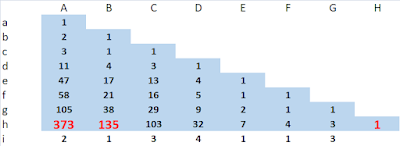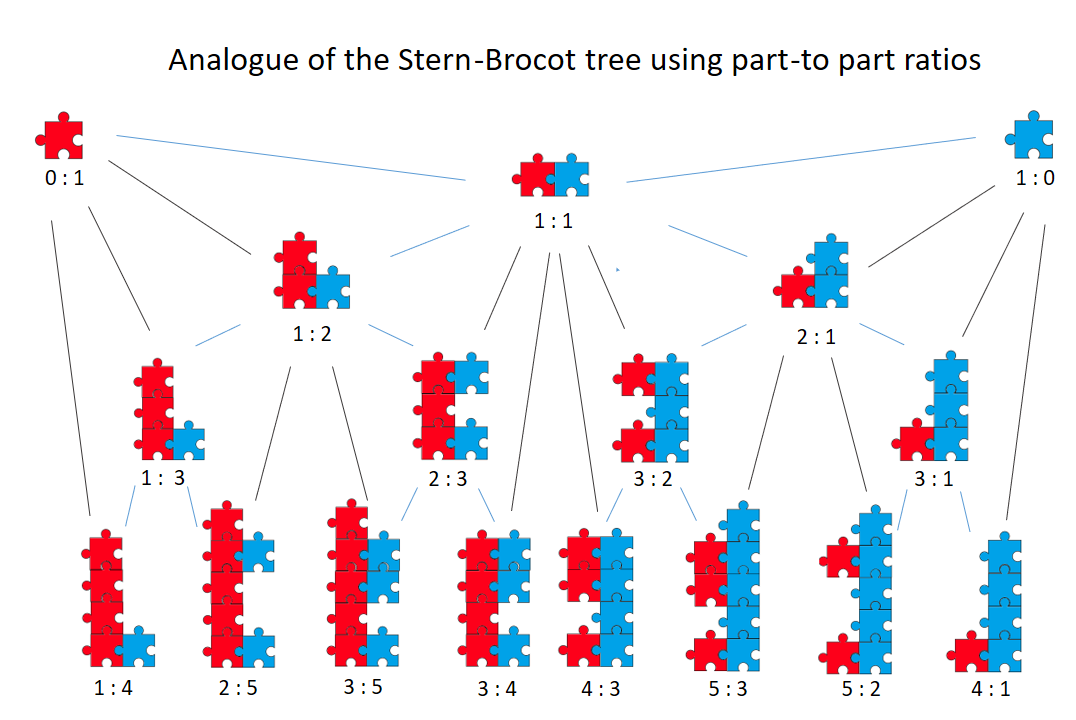Continued Fraction Triangle

This post is about patterns in the calculation of a continued fraction and its reverse and in successive truncations of a continued fraction. Table 1: calculation of continued fraction (row i) from integers 373 and 135 (row h) and calculation of convergents by successively truncating the continued fraction (upwards, rows g to a). Column H row h is the greatest common divisor of 373 and 135. Table 2: reverse continued fraction from Table 1 with successive convergents. DESCRIPTION OF TABLES 1 AND 2 Table 1 is a calculation of continued fraction (row i) from integers 373 and 135 (row h) and calculation of convergents by successively truncating the continued fraction by one term at a time (working upwards, rows g to a). Column H row i is the greatest common divisor of 373 and 135. The continued fraction can be interpreted as either [2; 1, 3, 4, 1, 1, 3], which represents \( \frac{373}{135} \) or [0; 2, 1, 3, 4, 1, 1, 3], which is the inverse \( \frac{135}{373} \). Row g of Table 1 ca
